Key takeaways:
- Plastic is deeply embedded in daily life, predominantly in single-use items, highlighting the need for awareness and reduction.
- The environmental impact of plastic includes pollution, microplastics in food systems, and greenhouse gas emissions during production.
- Reducing plastic usage can simplify life, inspire community involvement, and promote better health through safer alternatives.
- Challenges include convenience, limited availability of alternatives, and social pressures that can hinder sustainability efforts.
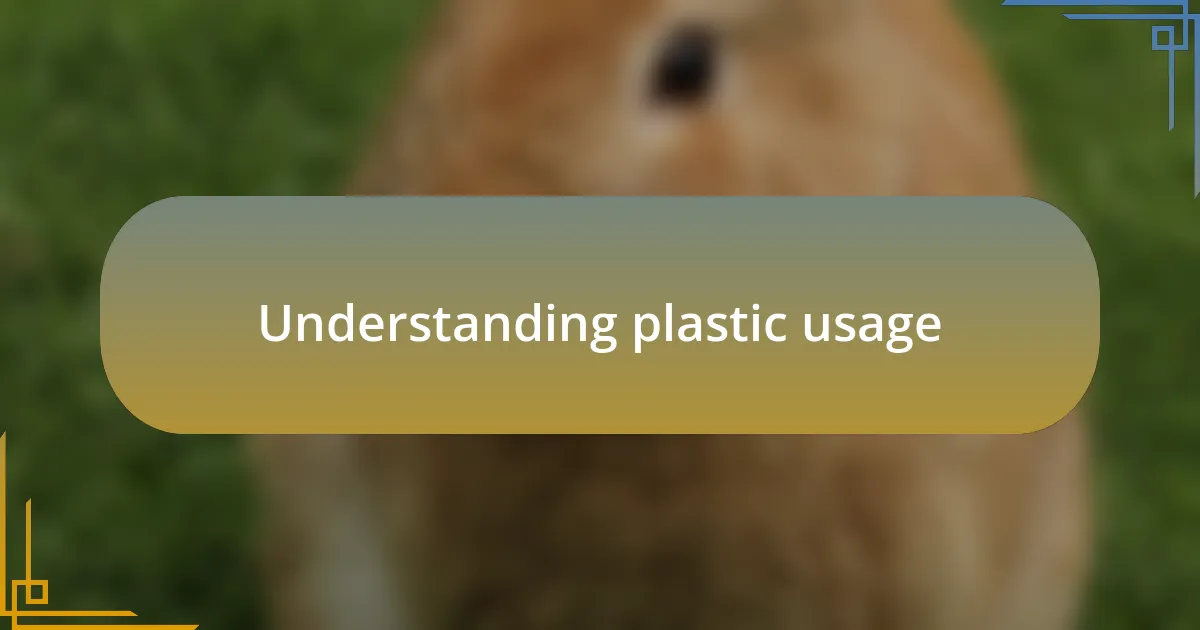
Understanding plastic usage
Plastic has become an integral part of our daily lives, often without us even realizing it. Have you ever stopped to consider how many items you touch that contain plastic? From the moment we wake up and brush our teeth with a plastic toothbrush to the plastic packaging our food comes in, it’s astonishing how pervasive this material has become.
As I began my journey to reduce plastic usage, I was shocked to discover that a significant portion of plastics is single-use. It made me question why we rely so heavily on materials that only serve a fleeting purpose. My awareness grew when I started to notice the sheer amount of plastic I was disposing of every week—especially when I realized that many of these items were unnecessary.
Understanding plastic usage also means recognizing its lifecycle—from production to disposal. Each time we choose a plastic product, we contribute to a larger problem that impacts our environment. For instance, I felt a deep sense of responsibility when learning that a single plastic bottle can take hundreds of years to decompose. This knowledge motivated me to explore alternatives, ultimately leading me to develop a more sustainable lifestyle.
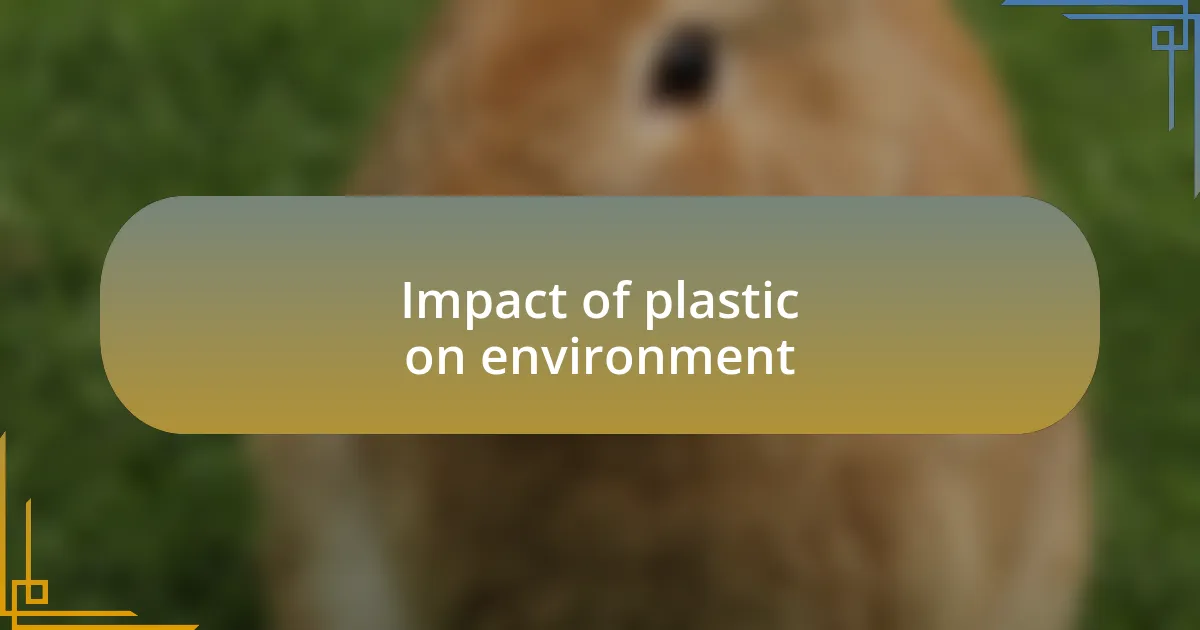
Impact of plastic on environment
The impact of plastic on the environment is staggering. For instance, I remember walking along a beach and noticing countless plastic debris scattered in the sand. It struck me then that these pieces of plastic, many of which were single-use items like straws and bags, were not just an eyesore but a testimony to our wastefulness and its far-reaching consequences on marine life.
When plastics break down, they don’t simply disappear; they fragment into microplastics that pollute soil and water systems. This was a hard pill for me to swallow, especially when I learned that these tiny particles can be ingested by fish and, eventually, find their way onto our dinner plates. Have you ever thought about the ripple effect this has on our health and ecosystem? It’s like a domino effect where one small action can lead to significant repercussions.
As I delved into the research, I found that plastics also contribute to greenhouse gas emissions during production and degradation. It personalizes the problem for me, knowing that my choices play a role in climate change. I can’t help but wonder—if we continue on this path, what kind of world will we be leaving for future generations? Seeing the direct link between our consumption habits and environmental health truly changed my perspective.
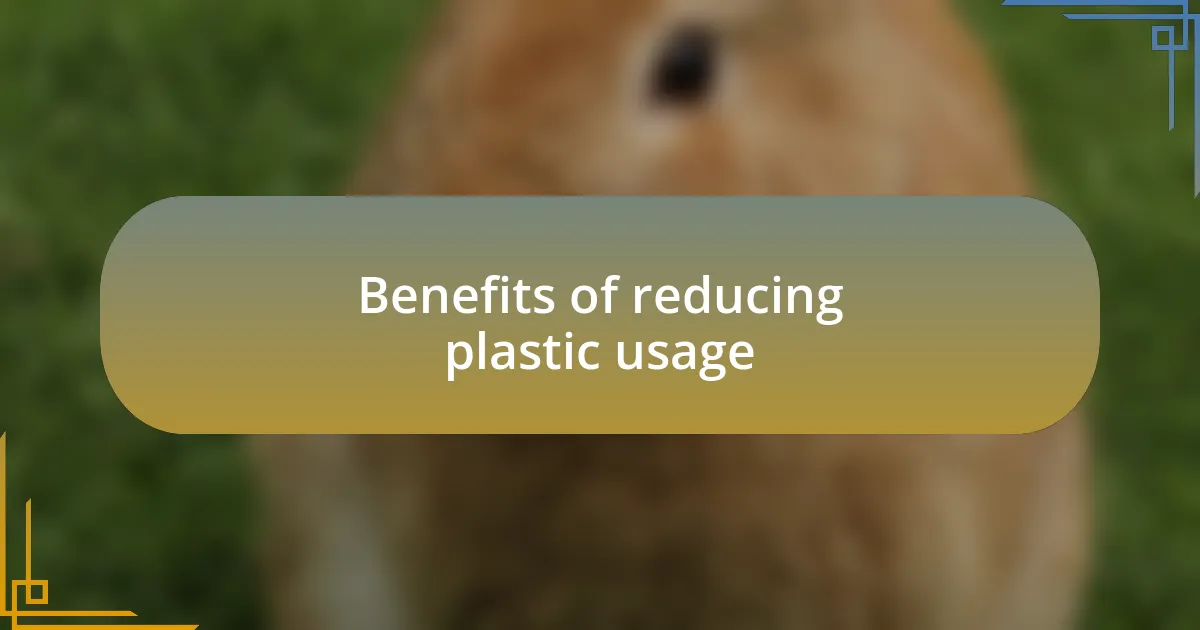
Benefits of reducing plastic usage
Reducing plastic usage brings numerous benefits that go beyond just personal satisfaction. For me, one immediate perk was simplifying my life. By cutting out unnecessary plastic products, I found myself embracing more sustainable alternatives, like bringing my own reusable bags to the grocery store. It might seem like a small change, but the feeling of making that conscious choice felt empowering.
Another significant benefit I’ve noticed is the positive impact on my community. When I began sharing my journey of reducing plastic with friends and family, I was pleasantly surprised by how many people were inspired to join in. It created a ripple effect. Have you ever experienced the joy of being part of something larger than yourself? That sense of camaraderie not only motivates me but strengthens our collective resolve to tackle this pressing issue together.
Lastly, reducing plastic usage can profoundly influence our health. I remember researching the dangerous chemicals often associated with plastic products and how they can leach into our food and drinks. This realization hit home; I started opting for glass and stainless steel containers instead. It’s a simple shift, yet I can’t help but feel relieved knowing that I’m making healthier choices for myself while also protecting the environment. What does it mean for your well-being when you choose safer, more sustainable alternatives? For me, it brings a newfound sense of peace and responsibility.

My journey towards less plastic
My journey towards reducing plastic has been a gradual evolution, filled with small but meaningful changes. I still vividly remember the first time I switched to a bamboo toothbrush. It was simple, yet I felt a spark of excitement with this eco-friendly choice. I thought, “Could this really make a difference?” Now, each time I brush my teeth, I’m reminded of my commitment to a healthier planet.
As I continued exploring plastic-free options, I faced the challenge of shopping without single-use plastic. I started frequenting local farmers’ markets, where I could buy fresh produce without plastic wrapping. There was something invigorating about filling my reusable produce bags with vibrant, organic fruits and veggies. Each visit felt like a mini celebration of sustainability, and I often wondered: how many others out there are rediscovering their connection with food through mindful shopping?
One of the most impactful moments in my journey came when I attended a workshop on sustainable living. Listening to passionate speakers share their experiences ignited a fire in me. I realized I wasn’t alone in this quest. Engaging with others who shared this vision not only provided invaluable insights but also made me reflect on my own choices. How powerful it feels to connect with a community united in purpose! That validation fueled my resolve to keep pushing forward in my commitment to reduce plastic in my life.
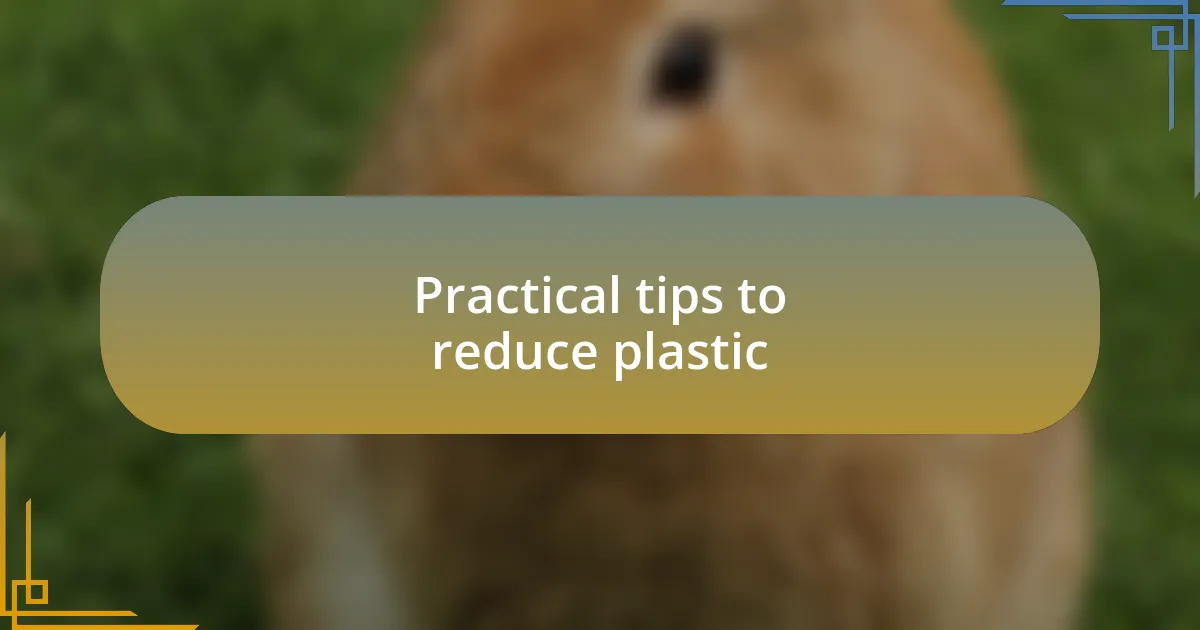
Practical tips to reduce plastic
One practical tip I’ve found incredibly helpful is to carry a reusable water bottle. It might sound simple, but since I started this habit, I’ve saved countless plastic bottles from ending up in landfills. There’s something refreshing about sipping from a bottle that reflects my commitment to reducing plastic—it’s a daily reminder that small choices can lead to big changes. Have you ever wondered how many disposable bottles we use without thinking?
Another effective change has been switching to bar soap instead of liquid soap in plastic bottles. I experienced a slight hesitation at first—what if the bar didn’t lather well? To my surprise, not only did it work beautifully, but I also realized I was supporting companies that prioritize sustainability. It feels good to know that my small adjustments are making a tangible impact. Isn’t it great to think that such a simple switch can reduce plastic waste?
One of the more challenging adjustments was bringing my own containers when ordering takeout. The first time I handed the restaurant my container, I felt a rush of vulnerability—what would they think? To my delight, the response was overwhelmingly positive. Now, every time I do this, I not only help cut down on plastic, but I also enjoy the satisfaction of being part of a community effort. Hasn’t there always been something deeply fulfilling about turning the ordinary into an opportunity for positive change?
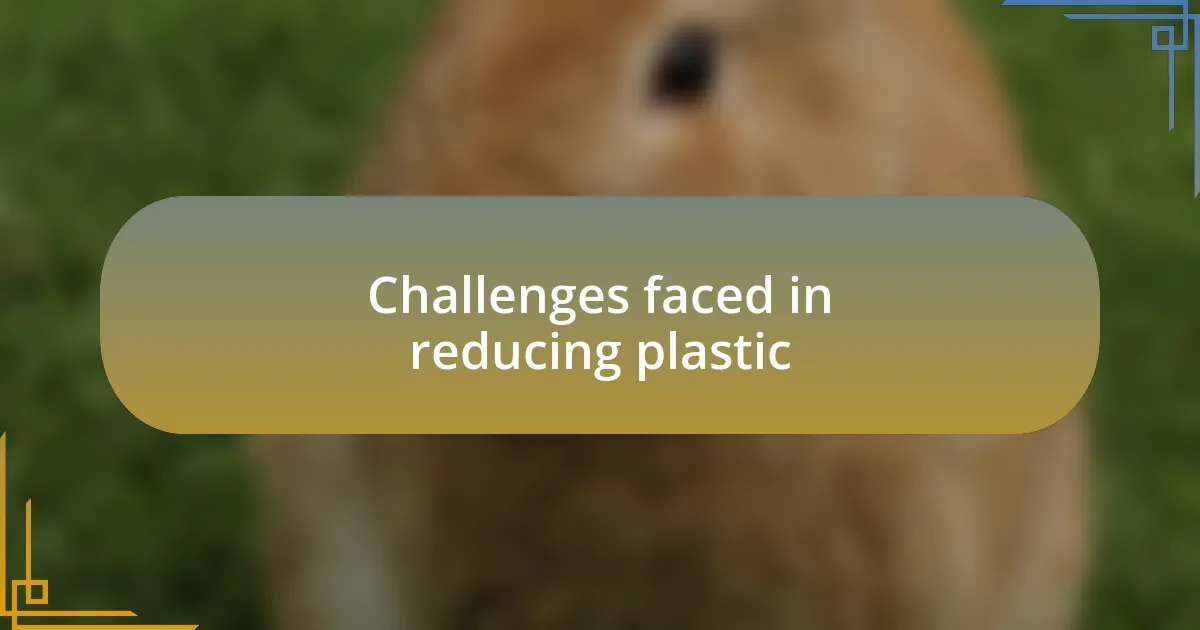
Challenges faced in reducing plastic
Reducing plastic usage can be a daunting task, and one of the biggest challenges I faced was the sheer convenience that plastic often provides. There were moments when I found myself reaching for a single-use plastic bag at the store, simply out of habit. It’s easy to forget the long-term impacts of that quick decision when you’re in a hurry, isn’t it?
Another obstacle I encountered was the availability of alternatives. While I strive to use items like beeswax wraps instead of cling film, I often found myself in situations where I couldn’t find them at my local grocery store. This made me question whether I was truly committed to my goal or just leaning on the easier options when they were within reach. Have you ever felt that pull between convenience and conscious choices?
Cultural expectations also played a significant role in my journey. Attending social gatherings, for instance, often meant navigating a sea of plastic-wrapped foods and disposable party supplies. I felt out of place bringing my own eco-friendly options, which sometimes made me hesitant to fully advocate for my values. How do you balance your commitment to sustainability with societal norms? I learned that it’s important to lead by example and share my journey, even when it feels uncomfortable.